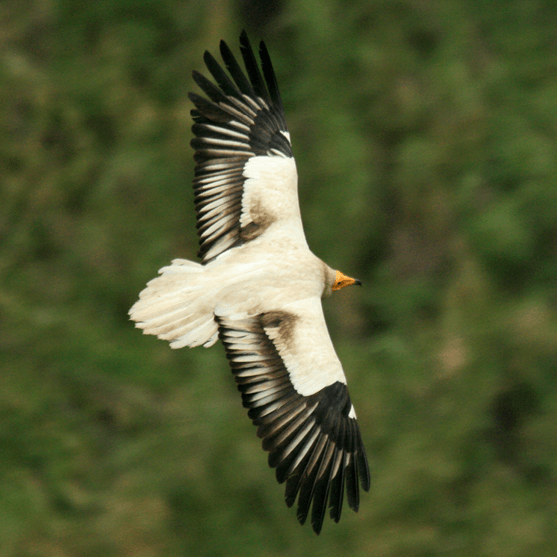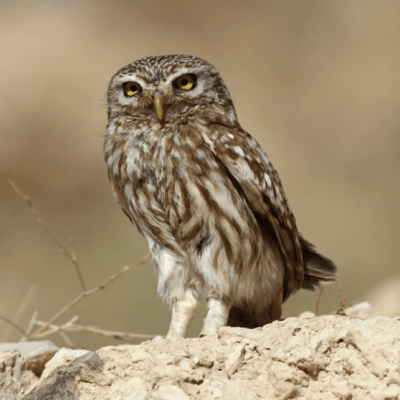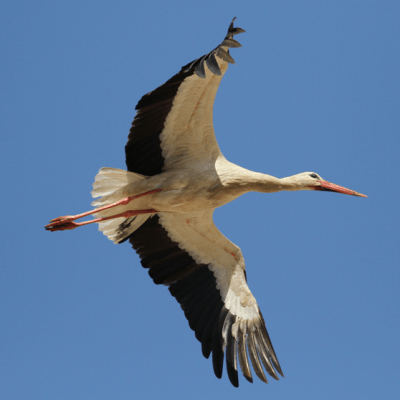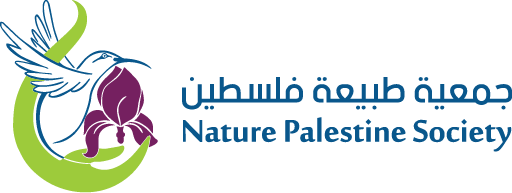By Anton Khalilieh
and Yara Dahdal

Since the outbreak of the COVID-19 pandemic, most of our meetings have been held online, as is the case for many people. The other day, during one of these meetings, an old ecologist friend who lives abroad remarked: “It seems you live in a good and healthy place. I can hear birds singing in the background.” His comment reminded us that we often forget how blessed we are to live in such a rich and diverse spot of the world.
Birds continue to be the most varied group of land vertebrates in our globe, and Palestine has a good share of this wealth due to its distinct location in the heart of the Middle East, as well as at the junction of the three continents of Asia, Africa, and Europe. Furthermore, four different biogeographic zones (Mediterranean, Irano-Turanian, Sudanian penetration, and Saharo Arabian) are packed within a small area that is directly linked to the rich flora and fauna within. Palestine is characterized by various natural habitats that include natural and manmade forests, a desert and coastlines, plains and cliffs, rocky slopes and cultivated fields, and mountains and hills, each accommodating distinctive bird species.
According to our comprehensive survey at Nature Palestine Society, there are 367 bird species that inhabit our surroundings at various times of the year. Around one-third of them breed in Palestine. Breeding birds may stay all year long, such as the chukar, spectacled bulbul, and Palestine sunbird, the national bird, and are usually referred to as “exclusively resident breeders.” Others come only during the spring to breed and raise their chicks, and afterwards migrate by the end of the summer. These are usually identified as “exclusively summer breeders” and include the lesser kestrel, woodchat shrike, and long-eared owl. Finally, there are species that are a mix of both, categorized as “complex breeders,” such as the Spanish sparrow. Around 150 bird species, such as the stonechat, visit Palestine during the winter season to enjoy its mild cold weather. In addition, there are more than 220 species that pay a visit to Palestine twice a year on their epic spring journeys of migration from Africa to Europe, and vice versa during the autumn season. It is worth mentioning that Palestine sits on the second most important migration flyway route, as 500 million birds pass through our skies. Sometimes they stop for a few days or weeks to feed and rest at what we call stopover sites, attracting birdwatchers, birders, scientists, and nature lovers from all over the world during the migration seasons.
The Palestinian environment faces threats that directly affect the habitats, well-being, and diversity of birds.
The Palestinian environment in general faces major threats and challenges that are directly reflected in birds’ habitat, well-being, and diversity. Habitat fragmentation and urban expansion are destroying birds’ nesting sites and foraging territories. The unsustainable use of pesticides and other chemicals in agriculture is poisoning birds and decreasing their numbers tragically. Climate change and its consequences (rising temperature, dryness, and shifting in seasons) affect the annual lifecycle of birds and their ability to nourish and reproduce. Anthropogenic disturbances by wildlife photographers, hikers, and curious individuals constitute a major threat to nesting parents and their chicks. Moreover, bird capturing, nest poaching (eggs and chicks), and hunting habits embedded in our culture exacerbate the war that authorities, civil society organizations, and nature lovers must wage every day.
If readers are still not convinced about the importance of bird conservation efforts, the following numbers should change their minds. Studies show that on the national level, eight bird species are critically endangered, seven bird species are endangered, nineteen bird species are vulnerable, eighteen bird species are near threatened, and seven bird species are extinct. This means that more than 35 percent of the total number of breeding bird species in Palestine are in the red zone. Conservation efforts will help to protect many of these species from extinction.
Much work remains to be done to preserve bird habitats in Palestine.
Numerous conservation efforts are being channeled towards conserving birds in Palestine, all with the support of the Environmental Quality Authority (EQA) and the help of the Environmental Police. The authorities are constantly following up on complaints concerning captured birds that are then inspected by ornithologists, freed when possible, or rehabilitated if needed before setting their wings free.
One of the most exciting and successful efforts was the rehabilitation and freeing of the critically endangered majestic Bonelli’s eagle. The story begins when one of the nature lovers learned about an eagle that had been captured by hunters. Initially, he was not aware of the importance of the bird (currently only two pairs reside in the West Bank), but his sense of duty urged him to approach the Nature Palestine Society. After some negotiations, the hunters agreed to hand over the ill bird. The eagle suffered from dehydration, malnutrition, and broken talons. After months of rehabilitation, a GPS telemetry was installed on the back of the bird for the first time in Palestine. The eagle was freed in Tamoun Nature Reserve during a large event under the auspices of the EQA that included local authorities in the Tubas governorate and community members. The eagle has been free for two years now, flying over 20,000 square kilometers. The eagle seems to like both the east and west banks of the Jordan River (see map that tracks its movement).
A golden eagle, another critically endangered species with only one pair remaining, was handed to the Nature Palestine Society by another responsible environmental activist. This eagle suffered from lead poisoning due to tens of bullets that were shot at him by hunters (see X-ray image). The long rehabilitation process was successful, and the eagle was freed back into nature, carrying our hopes and wishes that it would soon find its spouse.
In 2020, the Nature Palestine Society succeeded in rehabilitating and freeing 50 different bird species, an effort that would not have been possible without the close cooperation and coordination between the EQA, the Environmental Police, local authorities, nature lovers, and our amazing volunteers. The journey has started, and we are proud of our achievements. But achievements must always be accompanied by responsibilities. Nature Palestine Society has a mission to maintain and sustain.
Conservation efforts are direly needed, as 35 percent of bird species in Palestine are in the red zone of threat or near extinction.
Despite all the conservation efforts, more needs to be done. Authorities, civil society, stakeholders, and every member of the Palestinian family must work hand in hand to maintain bird habitats and natural areas. Development is unavoidable but must be done in a sustainable way to minimize harm to nature and its components. There is still room for more research to better evaluate the status and distribution of bird species in Palestine. Additional public awareness campaigns need to take place in order to educate the community about the importance of birds to our environment and health. Stakeholders must engage society in their conservation efforts and activities to encourage a sense of responsibility, especially among the younger generations. The governing environmental law in Palestine should be revised, modified, and updated to be able to address current environmental challenges and to comply with signed international conventions and treaties. The revised environmental law should contain deterrent penalties against nature crimes and outline reinforcement mechanisms. Finally, the establishment of a well-equipped national bird rehabilitation center must be the ultimate goal among all players in Palestine’s environmental sector.








Birds of Palestine – This Week in Palestine
Publish Date: April 2021
